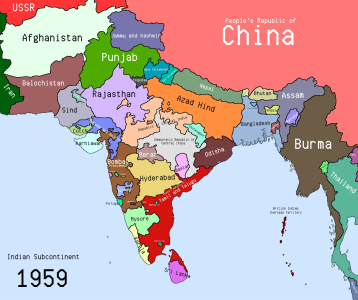rickroll
Tape Ball Star
- Joined
- Aug 26, 2022
- Runs
- 600
What if shortly after 1947, the entire sub-continent looked like below? Which regions/kingdoms would survive, which would get conquered and which would conquer others? So many other curious questions too ... how will this have affected the religious composition of South Asia? What about languages? Overall economy? Will parts of South Asia get conquered by other non-South Asian countries? I'm sure there are other factors I'm missing here.








